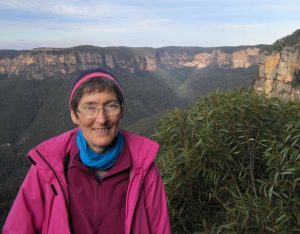 Gratitude is a quality and virtue that is like a hidden treasure. It is a spiritual force that brightens our existence and leads to inner harmony. Gratitude can bring an incredible amount of joy into our lives. It makes us happy.
Gratitude is a quality and virtue that is like a hidden treasure. It is a spiritual force that brightens our existence and leads to inner harmony. Gratitude can bring an incredible amount of joy into our lives. It makes us happy.
As a beautifying quality of the heart and mind, gratitude is not as well-known as other qualities such as the Ten Perfections or the Seven Factors of Awakening. However, the Buddha stated very clearly, “The good person is grateful and thankful.”
Those who are grateful remember words, deeds, situations, or events that were beneficial, profitable, or instructive. What is profitable or instructive does not necessarily have to be pleasant or beautiful. Even unpleasant or painful experiences and encounters can be instructive or beneficial. Spiritual maturity is reflected in the understanding that the potential for inner growth can be found in every situation and every moment. Whether pleasant or painful. Those who are grateful recognize that everything is a gift and that nothing should be taken for granted.
When a heartfelt ‘thank you’ goes beyond the conventional mechanical phrase, it creates a connection with the other person and brightens up both lives.The practice of gratitude not only sharpens the awareness of our connection with others but also how we depend on them. Food, clothes, transportation, computer, toothpaste, books, toilet brush – all these things are produced by others. On top of this, there are the social and emotional aspects of our lives that are covered by other people or living beings. In this way, we are always beneficiaries and we owe so much to others.
Gratitude engenders a sense of fullness and causes appreciation for everything we have and for whatever we encounter. And we realize that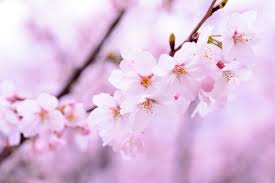 we have so much! We recognize our ‘wealth’. People often focus on what they are missing, ‘I still need this to be happy. I should have another pair of shoes ….’, and so on. With this perspective, there arises a feeling of never-enough, a sense of lack. This is truly a sorrowful and miserable feeling. I call this the ‘never-enough-syndrome’. Additional to a free-flowing gratitude practice throughout the day, we can take a few moments in the evening and reflect on at least three things for which we are grateful today. We may probably find that it is more and more the simple and ordinary ‘everyday-things’ that we are grateful for.
we have so much! We recognize our ‘wealth’. People often focus on what they are missing, ‘I still need this to be happy. I should have another pair of shoes ….’, and so on. With this perspective, there arises a feeling of never-enough, a sense of lack. This is truly a sorrowful and miserable feeling. I call this the ‘never-enough-syndrome’. Additional to a free-flowing gratitude practice throughout the day, we can take a few moments in the evening and reflect on at least three things for which we are grateful today. We may probably find that it is more and more the simple and ordinary ‘everyday-things’ that we are grateful for.

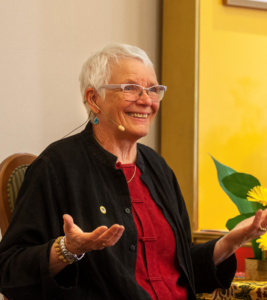 It helps to explore how we can work with fear from the point of view of the path, the student’s journey. How do we walk the path of fear? Fear is not a trivial matter. In many ways, it restricts our lives; it imprisons us. Fear is also a tool of oppression. Because of fear, we do many harmful things, individually & collectively, and people who are hungry for power over others know that & exploit it. We can be made to do things out of fear.
It helps to explore how we can work with fear from the point of view of the path, the student’s journey. How do we walk the path of fear? Fear is not a trivial matter. In many ways, it restricts our lives; it imprisons us. Fear is also a tool of oppression. Because of fear, we do many harmful things, individually & collectively, and people who are hungry for power over others know that & exploit it. We can be made to do things out of fear.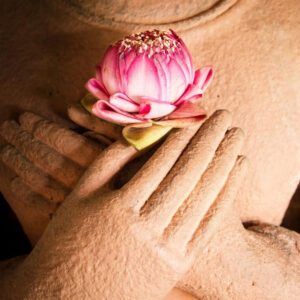 the right foot. The starting point is … where you look straightforwardly at your own experience. You examine fear & dissect it into its components. Where does it arise? What is the sensation when you feel afraid? What kind of thoughts race through your mind when you are in a state of fear? What’s your particular pattern? Do you panic? Do you freeze? Do you get really busy & try to fix everything? Do you get angry? At this stage in the path, you try to understand your experience, try to break it down.
the right foot. The starting point is … where you look straightforwardly at your own experience. You examine fear & dissect it into its components. Where does it arise? What is the sensation when you feel afraid? What kind of thoughts race through your mind when you are in a state of fear? What’s your particular pattern? Do you panic? Do you freeze? Do you get really busy & try to fix everything? Do you get angry? At this stage in the path, you try to understand your experience, try to break it down. of life. We’re not blind to all of this, but we do not create additional sorrow, despair & anguish around our contact with these common human experiences of life’s inevitable suffering.
of life. We’re not blind to all of this, but we do not create additional sorrow, despair & anguish around our contact with these common human experiences of life’s inevitable suffering.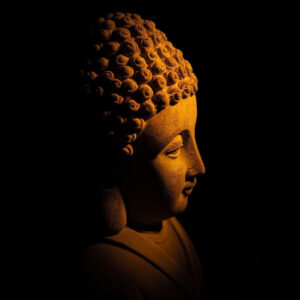 The Brahma-vihara of metta, generally translated as lovingkindness, is our response to the conditioned realm, a patient acceptance of everything, whether good or bad. Accepting the good is not so hard, but it is quite difficult not to hate the bad & seek revenge. Metta is not approval of the bad. It doesn’t mean that we remain ignorant or refuse to look. When we are in that state of pure attention & awareness, then we are not compounding the bad with hatred or the desire for revenge. Metta is responding with kindness & patience, without getting caught up in our habitual emotional reactions to repulsive or unpleasant experiences.
The Brahma-vihara of metta, generally translated as lovingkindness, is our response to the conditioned realm, a patient acceptance of everything, whether good or bad. Accepting the good is not so hard, but it is quite difficult not to hate the bad & seek revenge. Metta is not approval of the bad. It doesn’t mean that we remain ignorant or refuse to look. When we are in that state of pure attention & awareness, then we are not compounding the bad with hatred or the desire for revenge. Metta is responding with kindness & patience, without getting caught up in our habitual emotional reactions to repulsive or unpleasant experiences.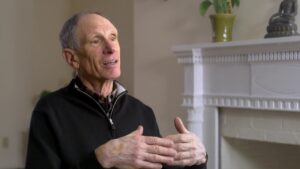
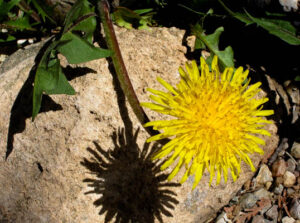
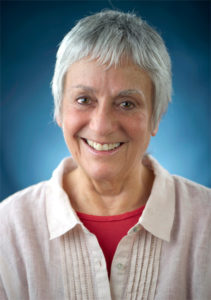 Dear Friends,
Dear Friends, together to drink some water. Returning to the nest to take her turn, the female dove finds both eggs broken open & the contents gone. I found her sitting hunkered down, perfectly still & quiet. She stayed that way for over an hour & then flew off. A few days later the pair built a new nest in a new tree & the process of nurturing new life began again.
together to drink some water. Returning to the nest to take her turn, the female dove finds both eggs broken open & the contents gone. I found her sitting hunkered down, perfectly still & quiet. She stayed that way for over an hour & then flew off. A few days later the pair built a new nest in a new tree & the process of nurturing new life began again.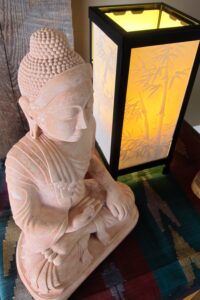 BREATH…”much gratitude for breath.” SENSATIONS IN THE FEET…”gratitude for feet.” HEARING BIRD SONG & WIND…”gratitude for hearing, for birds, for air”. THOUGHTS OF MY SON…”deep gratitude for my son”. INTERNAL & EXTERNAL DIFFICULTIES…Can we be grateful for difficulties? Difficult internal & external experiences can be some of our most inciteful teachers. MORNING SUNSHINE...”gratitude”. And on it goes without any clinging…JUST GRATITUDE!
BREATH…”much gratitude for breath.” SENSATIONS IN THE FEET…”gratitude for feet.” HEARING BIRD SONG & WIND…”gratitude for hearing, for birds, for air”. THOUGHTS OF MY SON…”deep gratitude for my son”. INTERNAL & EXTERNAL DIFFICULTIES…Can we be grateful for difficulties? Difficult internal & external experiences can be some of our most inciteful teachers. MORNING SUNSHINE...”gratitude”. And on it goes without any clinging…JUST GRATITUDE! everywhere.
everywhere. These last years, with Covid, isolation & political tensions, we have all been called to cultivate greater levels of compassion. We are facing many forms of suffering both on an individual & a collective level, and we are continuing to expand our hearts to all that is happening in the world. Thankfully we can find support in the Buddhas teaching on the four Brahma Viharas & the balancing potential of equanimity to support the compassionate heart.
These last years, with Covid, isolation & political tensions, we have all been called to cultivate greater levels of compassion. We are facing many forms of suffering both on an individual & a collective level, and we are continuing to expand our hearts to all that is happening in the world. Thankfully we can find support in the Buddhas teaching on the four Brahma Viharas & the balancing potential of equanimity to support the compassionate heart.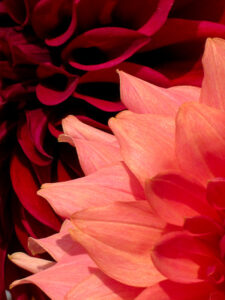 can have a hard time bearing the unpleasantness, without trying to get rid of it – either by turning away from suffering or somehow trying to fix it. It takes a lot of steadiness to simply breath with the unpleasantness of suffering, letting it be, letting it flow through without reactivity.
can have a hard time bearing the unpleasantness, without trying to get rid of it – either by turning away from suffering or somehow trying to fix it. It takes a lot of steadiness to simply breath with the unpleasantness of suffering, letting it be, letting it flow through without reactivity. in balance & harmony with each other & all living things. So now let us bring our minds together as one as we give greetings & thanks to each other as People. Now our minds are one.
in balance & harmony with each other & all living things. So now let us bring our minds together as one as we give greetings & thanks to each other as People. Now our minds are one. We gather our minds to greet & thank the enlightened Teachers who have come to help throughout the ages. When we forget to live in harmony, they remind us of the way we were instructed to live as people. With one mind, we send greetings & thanks to these caring Teachers. Now our minds are one.
We gather our minds to greet & thank the enlightened Teachers who have come to help throughout the ages. When we forget to live in harmony, they remind us of the way we were instructed to live as people. With one mind, we send greetings & thanks to these caring Teachers. Now our minds are one. occasions. The Thanksgiving Address, or “The Words that Come Before All Else,” is delivered in Native Haudenosaunee languages at both the beginning & the end of social gatherings, celebrations, and council meetings; and it is recited each morning at the beginning of the school day. The Thanksgiving Address is not a prayer, but rather an offering of greetings & thanks to the natural world. Each part of Creation is acknowledged & thanked for the ways in which it contributes to life on Earth.”
occasions. The Thanksgiving Address, or “The Words that Come Before All Else,” is delivered in Native Haudenosaunee languages at both the beginning & the end of social gatherings, celebrations, and council meetings; and it is recited each morning at the beginning of the school day. The Thanksgiving Address is not a prayer, but rather an offering of greetings & thanks to the natural world. Each part of Creation is acknowledged & thanked for the ways in which it contributes to life on Earth.”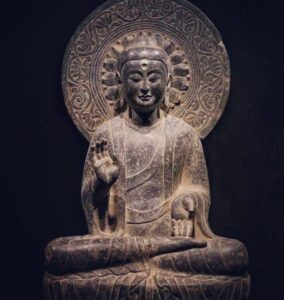 the mind. 2) Vipassana – Insight meditation. According to Buddhist tradition, the Buddha himself used Anapana Sati meditation to attain Enlightenment. This is the most respected meditation in all traditions, both the North & the South. Why? The Buddha himself told, “See it yourself. Do not accept just because I say so.”
the mind. 2) Vipassana – Insight meditation. According to Buddhist tradition, the Buddha himself used Anapana Sati meditation to attain Enlightenment. This is the most respected meditation in all traditions, both the North & the South. Why? The Buddha himself told, “See it yourself. Do not accept just because I say so.”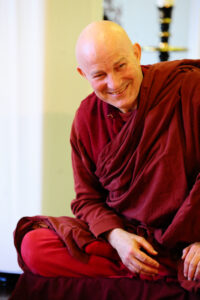 If you have strong emotions, it will reflect on the quality of your Breath, and you will use much effort for perceptions of your Mind. When you cool down, your feelings, perceptions & Breath changes. What we have to strive for is “Appeased Breath,” especially when we face difficulties in life. So practice this meditation to achieve an appeased mind. Then you will be able to cope with any difficulties/defilements in daily life, with the “Mindfulness of Breath.”
If you have strong emotions, it will reflect on the quality of your Breath, and you will use much effort for perceptions of your Mind. When you cool down, your feelings, perceptions & Breath changes. What we have to strive for is “Appeased Breath,” especially when we face difficulties in life. So practice this meditation to achieve an appeased mind. Then you will be able to cope with any difficulties/defilements in daily life, with the “Mindfulness of Breath.”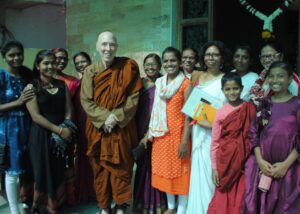 For many of us in the West, Buddhism first appears on the horizon as a path to inner peace offering relief from the tensions of daily living. This perception is reinforced by popular culture, which pictures the Buddha as a man sitting motionless with crossed legs and closed eyes, seemingly lost to his surroundings. Seldom do we think that Buddhism might hold out practical clues for resolving the complex problems that weigh so heavily on our planet. The problems seem just too big for an ancient system of contemplative spirituality.
For many of us in the West, Buddhism first appears on the horizon as a path to inner peace offering relief from the tensions of daily living. This perception is reinforced by popular culture, which pictures the Buddha as a man sitting motionless with crossed legs and closed eyes, seemingly lost to his surroundings. Seldom do we think that Buddhism might hold out practical clues for resolving the complex problems that weigh so heavily on our planet. The problems seem just too big for an ancient system of contemplative spirituality.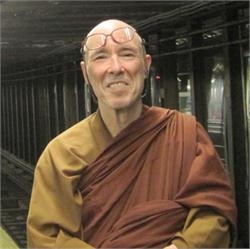 human life on earth. We have to create communities, both locally and globally, that express wisdom, care, and compassion. The word dharma means not just Buddhism but the whole body of principles that support human beings and draw out our best potentials. To be itself, karuna, “compassion,” must eventuate in karana, “doing.” Our work may begin with transforming our own minds and values but it cannot stop there. We have to go further and manifest these in action—in deeds that will build a safer, kinder, and more just world.
human life on earth. We have to create communities, both locally and globally, that express wisdom, care, and compassion. The word dharma means not just Buddhism but the whole body of principles that support human beings and draw out our best potentials. To be itself, karuna, “compassion,” must eventuate in karana, “doing.” Our work may begin with transforming our own minds and values but it cannot stop there. We have to go further and manifest these in action—in deeds that will build a safer, kinder, and more just world.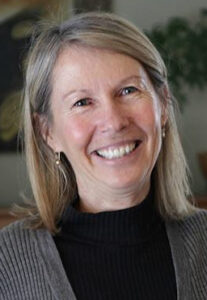 There is a well-known teaching of the Buddha that we might not give the attention it deserves. It goes something like this: “If transforming the defilements of mind were not possible, I would not ask you to practice towards this end. It is because it is possible that I ask.”
There is a well-known teaching of the Buddha that we might not give the attention it deserves. It goes something like this: “If transforming the defilements of mind were not possible, I would not ask you to practice towards this end. It is because it is possible that I ask.”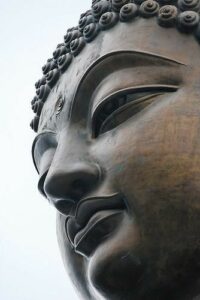 don’t belong to anybody, but are known by the mind as they arise and then cease. When we understand this, we don’t attach to them as being “mine”. In this way they are disempowered. The more we are able to meet the moment with mindfulness and wisdom, the less we are feeding these unskillful tendencies. They begin to wither and die in the same way that a plant that is not watered begins to die.
don’t belong to anybody, but are known by the mind as they arise and then cease. When we understand this, we don’t attach to them as being “mine”. In this way they are disempowered. The more we are able to meet the moment with mindfulness and wisdom, the less we are feeding these unskillful tendencies. They begin to wither and die in the same way that a plant that is not watered begins to die.